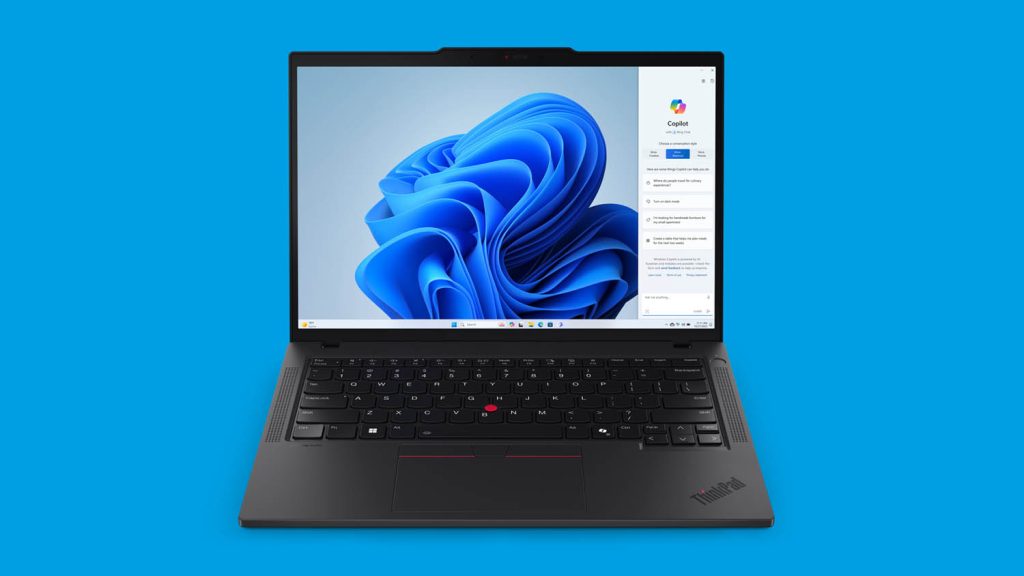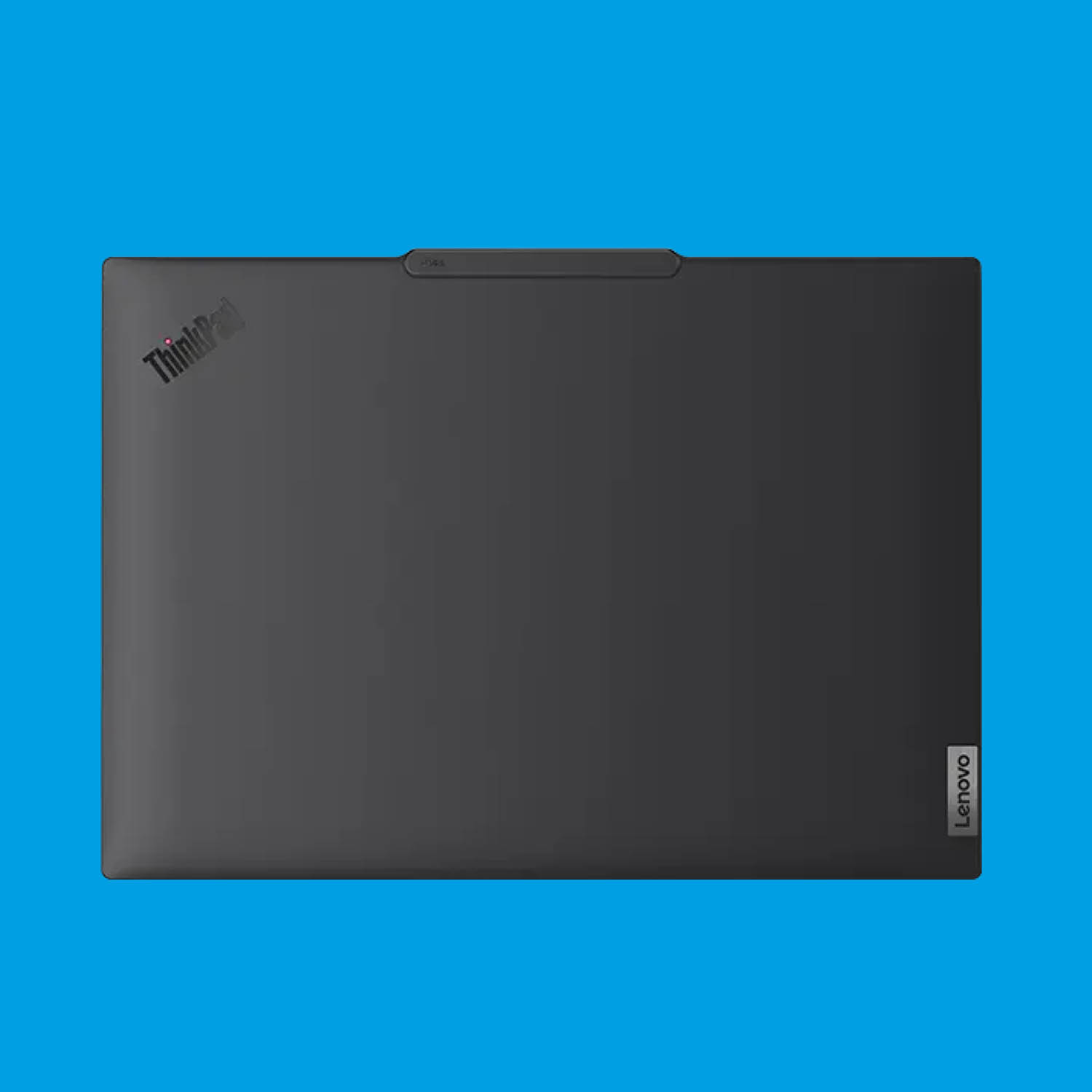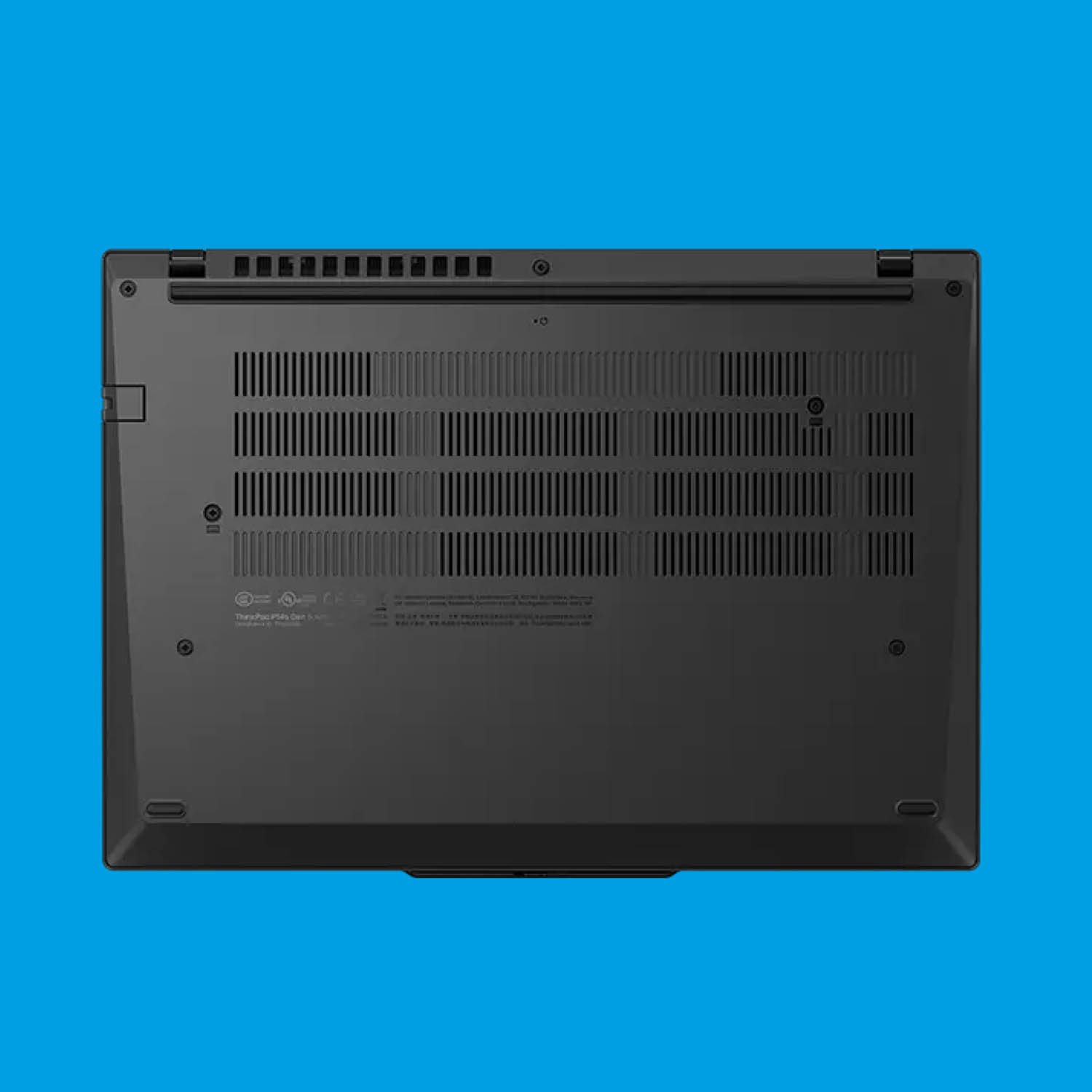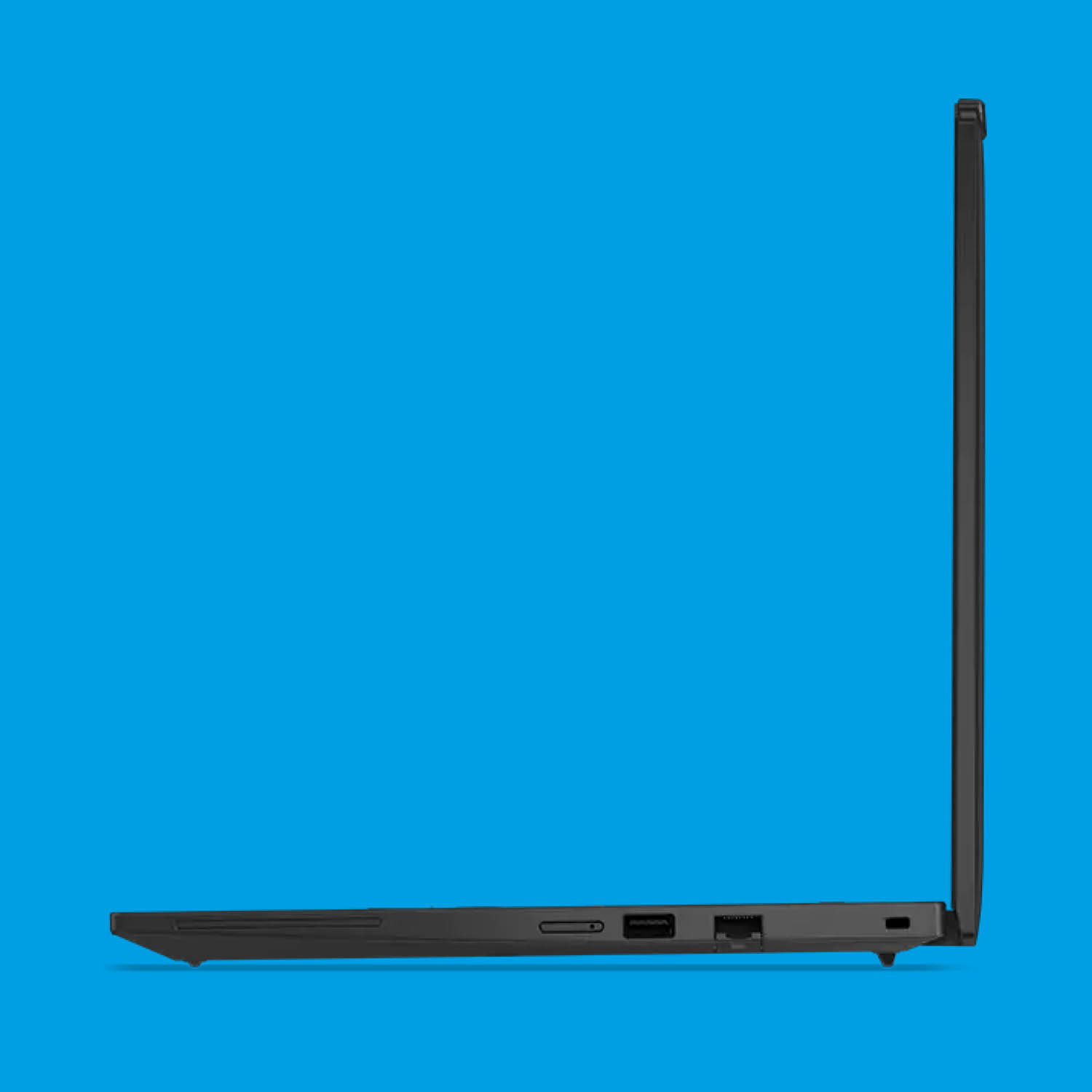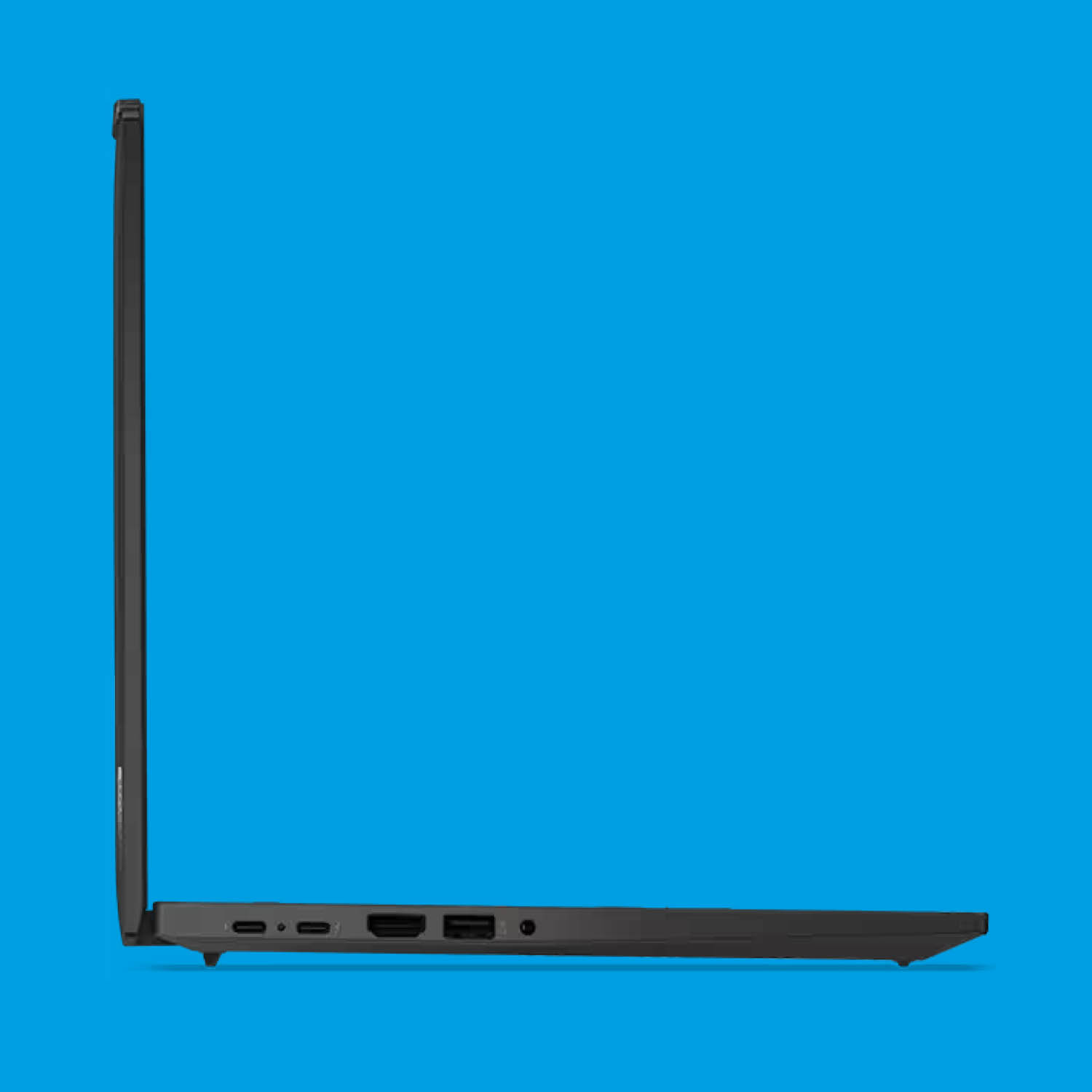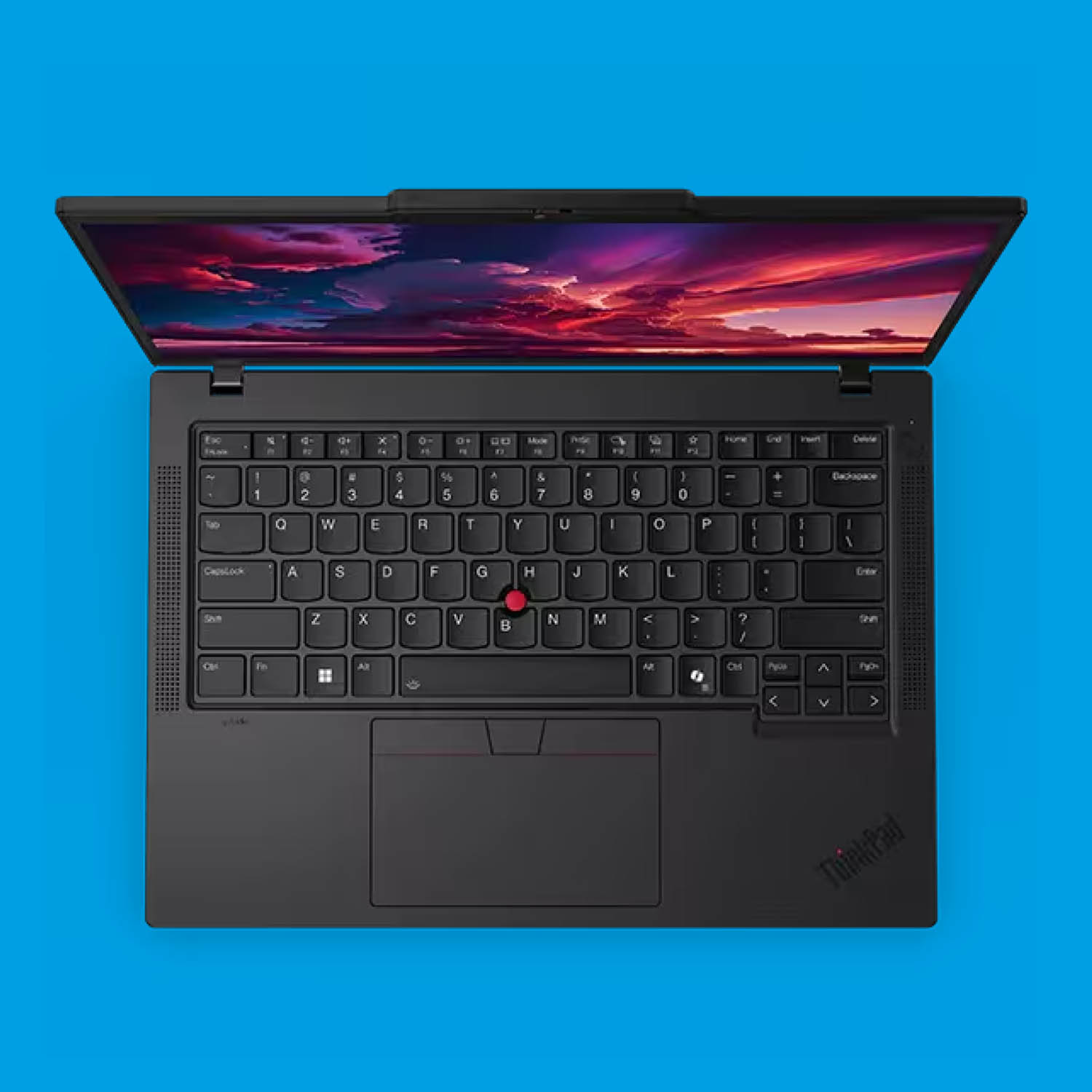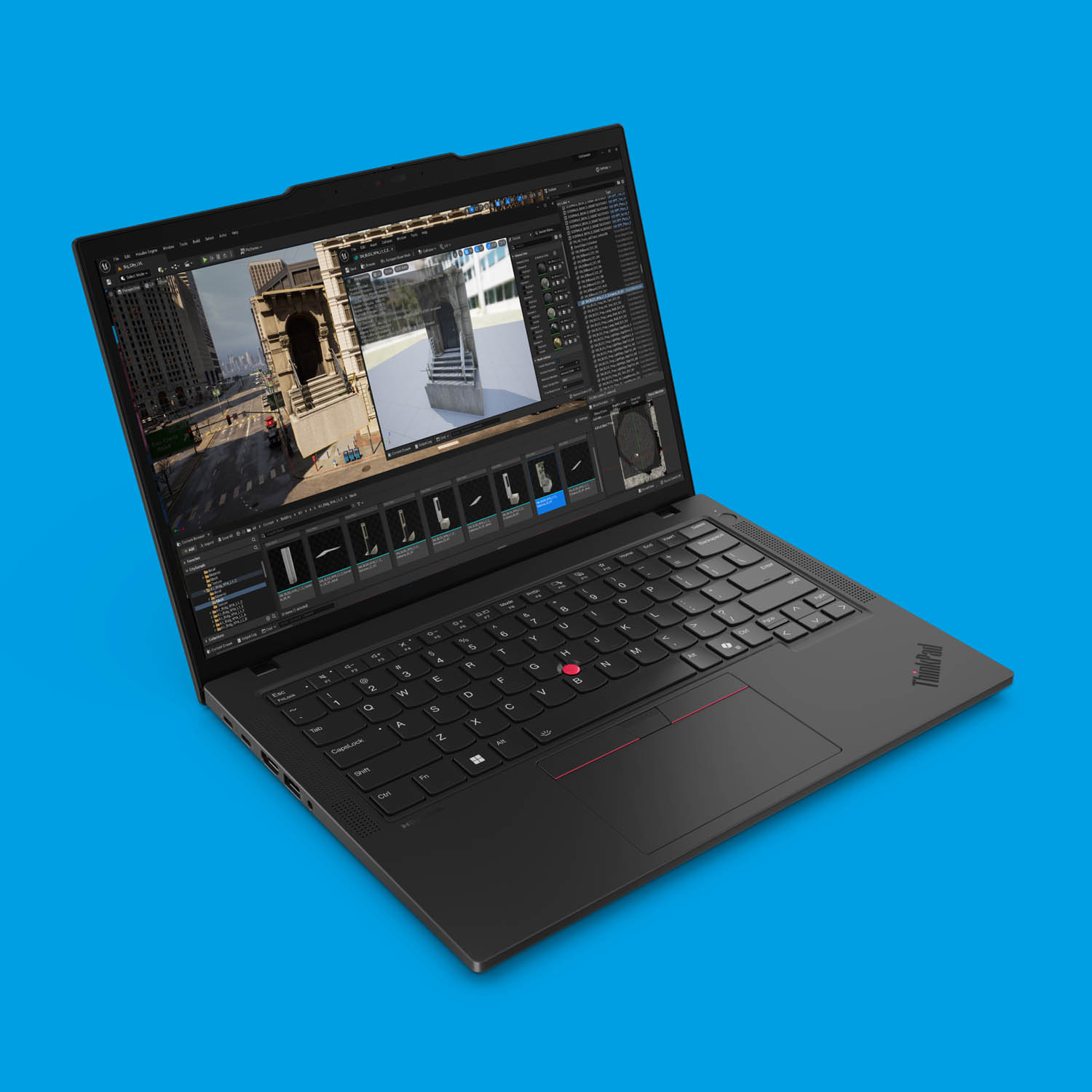This 14-inch mobile workstation stands out for its exceptional serviceability featuring several customer-replaceable components, writes Greg Corke
The ThinkPad P14s Gen 5 (AMD) is the thinnest and lightest mobile workstation from Lenovo — 17.71mm thick and starting at 1.31kg. It’s a true 14-incher, smaller than the ThinkPad P14s Gen 5 (Intel), which has a slightly larger 14.5-inch display.
The chassis is quintessential ThinkPad — highly durable, with sturdy hinges and an understated off-black matte finish. The keyboard feels solid, complemented by a multi-touch TrackPad with a pleasingly smooth Mylar surface. True to tradition, it also comes with the ThinkPad-standard TrackPoint with its three-button setup. We’ve yet to meet anyone who actually uses this legacy pointing device, but removing it would likely spark outrage among die-hard fans. Meanwhile, the fingerprint reader is seamlessly integrated into the power button for added convenience.
This article is part of AEC Magazine’s 2025 Workstation Special report
The laptop stands out for its impressive serviceability, allowing the entire device to be disassembled and reassembled using basic tools — just a Phillips head screwdriver is needed to remove back panel.
It offers a range of customer replaceable components, including the battery (39.3Wh or 52.5Wh options), M.2 SSD, and memory DIMMs, which thankfully aren’t soldered onto the motherboard. Beyond that, you can swap out the keyboard, trackpad, speakers, display, webcam, fan/heatsink assembly, and more.
The keyboard deserves a special mention for its top-loading design, eliminating the need to dismantle the laptop from below. Simply remove two clearly labelled screws from the bottom panel, and the keyboard pops off from the top.
There’s a choice of two AMD Ryzen 8000 Series processors: the Ryzen 5 Pro 8640HS (6 cores) and the Ryzen 7 Pro 8840HS (8 cores). Both have a Thermal Design Power (TDP) of 28W. Lenovo has chosen not to support the more powerful 45W models, likely due to thermal and power considerations. 45W models are available in the HP ZBook Firefly G11 A (read our review).
Our review unit came with the entry-level Ryzen 5 Pro 8640HS. While capable, it has slightly lower clock speeds, two fewer cores, and a less powerful integrated GPU compared to the flagship 45W AMD Ryzen 9 Pro 8945HS.
The machine performed well in Solidworks (CAD) and Revit (BIM), but unsurprisingly came in second to the HP ZBook Firefly in all our benchmarks. The margins were small, but became more noticeable in multi-threaded workflows, especially rendering. On the plus side, the P14s was slightly quieter under full load.
Our review unit’s 14-inch WUXGA (1,920 x 1,200) IPS display is a solid, if not stand out option, offering 400 nits of brightness. One alternative is a colour-calibrated 2.8K (2,880 x 1,800) OLED screen — also 400 nits, but with 100% DCI-P3 and 120Hz refresh.
The 5.0 MP webcam with IR and privacy shutter is housed in a slight protrusion at the top of the display. While this design was necessary to accommodate the higher-resolution camera (an upgrade from the Gen 4), it also doubles as a convenient handle when opening the lid.
Additional highlights include up to 96 GB of DDR5-5600 memory, Wi-Fi 6E, a hinged ‘drop jaw’ Gigabit Ethernet port, 2 x USB-A and 2 x USB-C. It comes with a compact 65 W USB-C power supply.
Overall, the ThinkPad P14s Gen 5 stands out as a reliable performer for CAD and BIM, offering an impressive blend of serviceability and thoughtful design.
In an era where manufacturers often prioritise ‘thinner and lighter’ over repairability, it’s great to see Lenovo bucking this trend, a move that is sure to resonate with right-to-repair advocates.
Specifications
- AMD Ryzen 7 Pro 8840HS processor (3.3 GHz base, 5.1 GHz max boost) (6-cores)
- Integrated AMD Radeon 760M GPU
- 32 GB (2 x 16 GB) DDR5-5600 memory
- 512 GB, PCIe 4.0 M.2 SSD
- 14-inch WUXGA (1,920 x 1,200) IPS display with 400 nits
- 316 x 224 x 17.7 mm (w/d/h)
- From 1.31 kg
- Microsoft Windows 11 Pro
- 3 Year Premier Support
- 1,209 (Ex VAT
- www.lenovo.com
This article is part of AEC Magazine’s 2025 Workstation Special report
- Features
- AMD Ryzen AI Max Pro: the integrated GPU comes of age
- AMD Ryzen 9000 vs Intel Core Ultra 200S
- Workstations for arch viz
- The AI enigma – challenges for workstations
- Nvidia RTX GPUs for Stable Diffusion
- Z by HP Boost: GPUs on demand
- Workstations for reality modelling
Reviews
- HP ZBook Firefly 14 G11 A mobile workstation
- Lenovo ThinkPad P14s (AMD) mobile workstation
- Scan 3XS GWP-A1-C24 and GWP-A1-R32 desktop workstations
- Boxx Apexx A3 desktop workstation
- Armari Magnetar MM16R9 desktop workstation
- Comino Grando workstation RM
News
- Reshuffle spells end for Dell Precision workstation brand
- Lenovo powers IMSCAD workstation as a service (WaaS)
- Nvidia unveils ‘Blackwell’ RTX GPUs
- HP to launch 18-inch mobile workstation
- Nvidia reveals AI workstation
- HP bets big on AMD Ryzen AI Max PRO processor
- Intel Core Ultra 200HX and 200H processors launch
- AMD Ryzen AI Max PRO ‘Strix Halo’ processor launches

